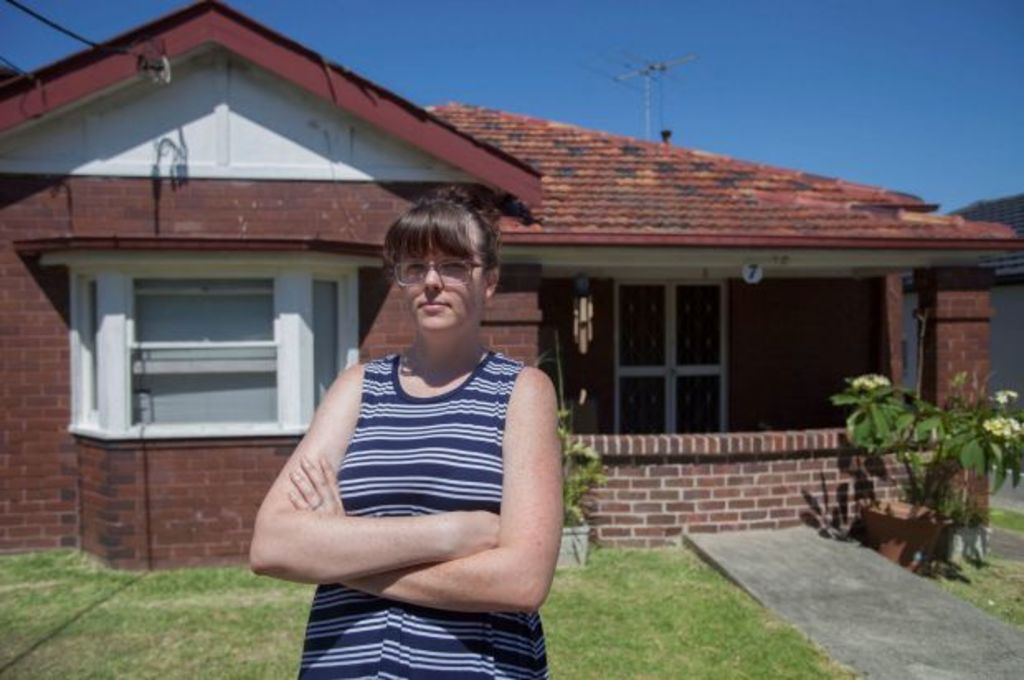Tenants 'desperate to buy' but prices and rents rising faster than incomes, data shows

Sydney house prices have grown at twice the rate of incomes over the past 20 years, leaving today’s first home buyers in a near-impossible situation, experts say.
But it’s another part of the housing affordability equation – rent increases – that policymakers are being urged to look at.
For most moderate and low income households the rental market is now “where they’ll be for the rest of their lives,” according to University of Sydney chair of urban and regional planning and policy, Peter Phibbs.
“If you’re a potential first home owner trying to save for a deposit … you’re paying rent and that rent is escalating,” Professor Phibbs said.
“The problem is that house price inflation earlier in the century connected with pretty fast-rising incomes, now incomes are really rising between 1 and 2 per cent and house prices are going up by 10 per cent and if you’re trying to save for a deposit you just can’t get there.”
Four years ago, Candice McLaughlin, 29, and her fiance, started renting in Picnic Point for $500 a week. After their lease ended, the landlord put the rent up $50 – a 10 per cent rise.
Her most recent home, in Earlwood, was rented at $610 a week – which the couple could afford to pay with a roommate.
“Now the rent has gone up to $630 a week. [The landlord] said the area is valued at more … so we’re moving again,” Ms McLaughlin said.
“We are desperate to buy our own house but when you’re paying $600 a week in rent the hardest thing is getting a deposit … You have to fight to get a property and once you have it at the end [of the lease] they jack up the rent”.
They’re not alone – data from NSW Housing, Domain and the Australian Bureau of Statistics shows house prices and rents have outpaced income growth. Sydney’s median house price is now above $1.1 million.
The average weekly earnings in NSW grew 4.3 per cent annually over the past 20 years on a compound annual growth rate, but house prices went up 8.3 per cent and rents jumped 5 per cent.
And while fixing housing affordability has been named a top priority by NSW Premier Gladys Berejiklian, she told Domain there would be many who would need or prefer to rent.
“I believe increased supply eases the pressure on rental inflation and allows for a rise in vacancy rates – that means tenants have more choice and flexibility in where to live,” Ms Berejiklian said, noting the government was “open” to other solutions.
Tenants Union of NSW (TUNSW) senior policy officer Ned Cutcher said high supply doesn’t always result in downward pressure on rents – particularly when brand new apartments are replacing older, more affordable homes.
Instead, the TUNSW’ proposal is for the onus to be on the landlord to fight their case for any proposed rent increase in excess of inflation (CPI).
“This could be dealt with through law reform, but this is not being done in the current statutory review,” he said.
Until the legislation changes, Sydney tenants are left waiting for the “inevitable” increase when their fixed lease comes to an end, Anthony Ziebell founder of tenant’s community site Don’t Rent Me said.
Current rules require increases to be “reasonable” and, unless written into the lease agreement, landlords must wait until after the lease expires to increase the rent.
“But what does reasonable mean? The way it is right now, tenants have hardly any protection from rent increases and any change would be good,” he said.
These changes could include limits on the size of rent increases, he said. This would be particularly attractive to tenants trying to save.
“The reality is house prices and rents are growing in advance of [inflation] and pay rises.
“Every year the cost of renting is increasing so much that how are you ever going to have a deposit? I can’t imagine how the average Australian can do it,” he said.
But Lisa Indge, director of property management company Let’s Rent, said the landlords she worked with wanted to maintain a tenancy.
“All of our landlords are of the view that long-term tenancies are better,” she said.
“If an owner wants to try and get a price for their property that is above market value, they will fail every time.”
We recommend
States
Capital Cities
Capital Cities - Rentals
Popular Areas
Allhomes
More







